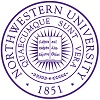专业详情
Coterminal Master’s Program in Education
The Graduate School of Education admits a limited number of students from undergraduate departments within the University into a coterminal master’s program. For information about the coterminal option through the Stanford Teacher Education Program (STEP), see the details under STEP. Students in a coterminal program receive the bachelor’s degree in their undergraduate major and the master’s degree in Education. Approval of the student’s undergraduate department and admission to the Graduate School of Education’s master’s program are required. Undergraduates may apply when they have completed at least 120 units toward graduation (UTG). The number of units required for the M.A. degree depends on the program requirements; see the Master’s Handbook for additional information.
Applicants may learn more about the GSE’s coterminal application process from the Graduate School of Education’s web site. All coterm programs accept online applications. Information regarding University rules about application and eligibility for coterm admission can be found on the Registrar’s web site.
University Coterminal Requirements
Coterminal master’s degree candidates are expected to complete all master’s degree requirements as described in this bulletin. University requirements for the coterminal master’s degree are described in the Coterminal Master’s Degrees section. University requirements for the master’s degree are described in the Graduate Degrees section of this bulletin.
After accepting admission to this coterminal master’s degree program, students may request transfer of courses from the undergraduate to the graduate career to satisfy requirements for the master’s degree. Transfer of courses to the graduate career requires review and approval of both the undergraduate and graduate programs on a case by case basis.
In this master’s program, courses taken three quarters prior to the first graduate quarter, or later, are eligible for consideration for transfer to the graduate career. No courses taken prior to the first quarter of the sophomore year may be used to meet master’s degree requirements.
Course transfers are not possible after the bachelor’s degree has been conferred.
The University requires that the graduate advisor be assigned in the student’s first graduate quarter even though the undergraduate career may still be open. The University also requires that the Master’s Degree Program Proposal be completed by the student and approved by the department by the end of the student’s first graduate quarter.
Master of Arts and Master of Science Degrees in Education
The Graduate School of Education offers Master of Arts degrees in the following specializations:
● Curriculum and Teacher Education (CTE) (This is not a credentialing program; see STEP below.)
● International Comparative Education (ICE)
● International Education Policy Analysis (IEPA)
● Joint Degree with Graduate School of Business (M.A./M.B.A.)
● Joint Degree with Law School (M.A./J.D.)
● Joint Degree with Public Policy Program (M.A./M.P.P.)
● Policy, Organization, and Leadership Studies (POLS)
The Graduate School of Education offers Master of Science degrees in the following specializations:
● Education Data Science (EDS)
● Learning, Design, and Technology (LDT)
In addition, an M.A. degree with a teaching credential is offered in the Stanford Teacher Education Program.
Stanford Teacher Education Program (STEP)
STEP is a 12-month, full-time program leading to a Master of Arts and a preliminary California teaching credential. STEP offers a Master of Arts in Education that prepares program graduates for careers as teachers in single or multiple subject classrooms. STEP Elementary prepares students to become teachers in multiple subject classrooms. STEP Secondary prepares students to become teachers of English, World Languages (French, Mandarin, Spanish), Mathematics, Science (biology, chemistry, earth science, physics), and History/Social Science. STEP seeks to prepare and support teacher candidates to work with diverse learners to achieve high intellectual, academic, and social standards by creating equitable and successful schools and classrooms.
The 12-month STEP year begins in June with a summer quarter of intensive academic preparation and placement in a local summer school. During the academic year, students continue their course work and begin year-long field placements under the guidance of expert teachers in local schools. The Master of Arts and teaching credential require a minimum of 45 quarter units, taken during four quarters of continuous residency.
Stanford undergraduates who enroll in STEP through the coterminal program must complete their undergraduate coursework and have their bachelor’s degree conferred prior to beginning in the STEP year. Coterminal STEP students graduate with a Master of Arts in Education and a recommendation for a preliminary California teaching credential.
Applicants to STEP Elementary are required to meet the basic skills requirement by one of the following methods: pass the California Basic Educational Skills Test (CBEST), an approved out of state basic skills exam, the CSET: Writing Skills, achieve qualifying scores on the SAT, ACT or AP examinations, or undergraduate coursework. Applicants must also pass the California Multiple Subject Examination for Teachers (CSET), and the Reading Instruction Competence Assessment Test (RICA).
Applicants to STEP Secondary are required to meet the basic skills requirement by one of the following methods: pass the California Basic Educational Skills Test (CBEST), an approved out of state basic skills exam, achieve qualifying scores on the SAT, ACT or AP examinations, or undergraduate coursework. Additionally, applicants must demonstrate subject matter competence in one of two ways:
- by passing the California Subject Examination for Teachers (CSET) in their content area; or
- by completing a California state-approved subject matter preparation program.
The GRE is not required for STEP external or coterminal applicants.
Further information regarding admission requirements, course work, and credential requirements is available at the Stanford Teacher Education Program web site.


